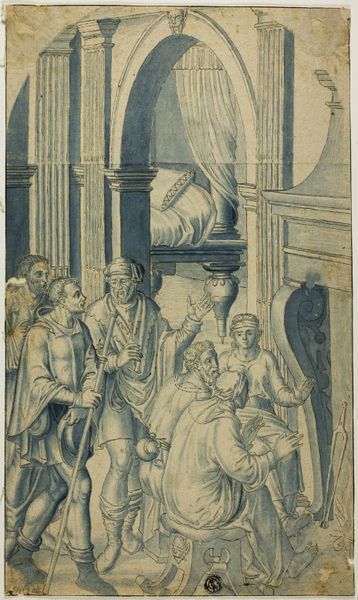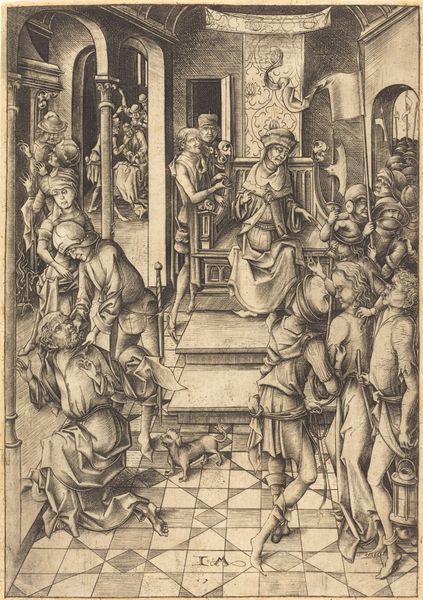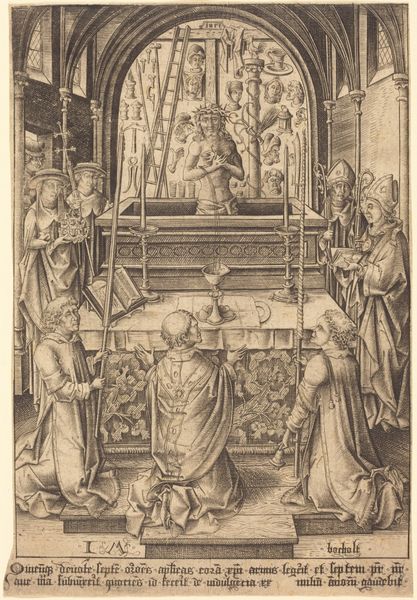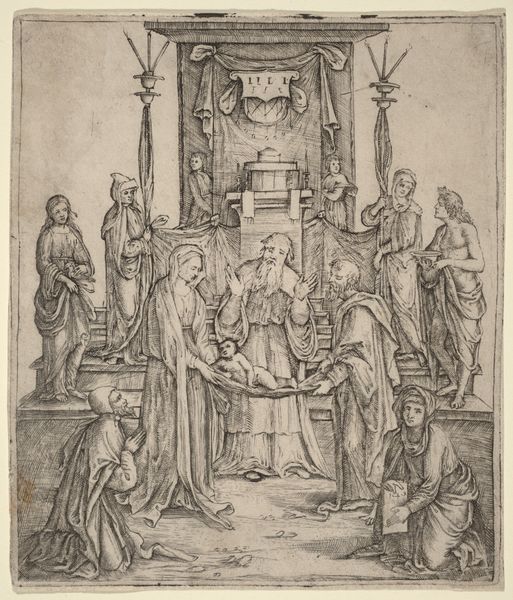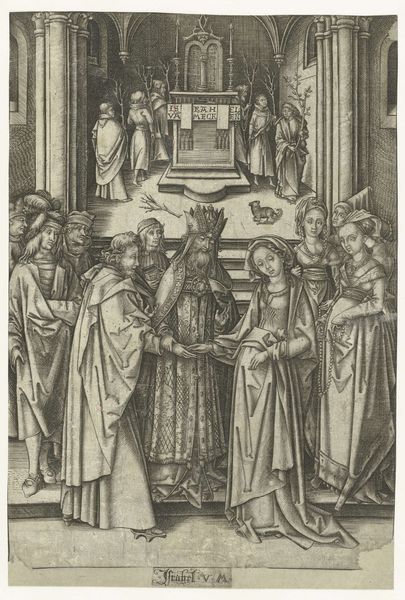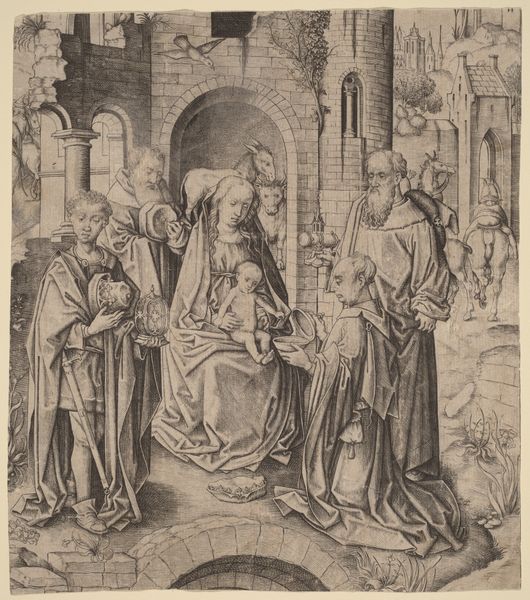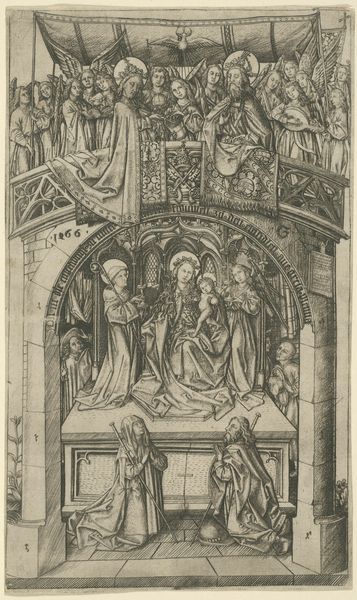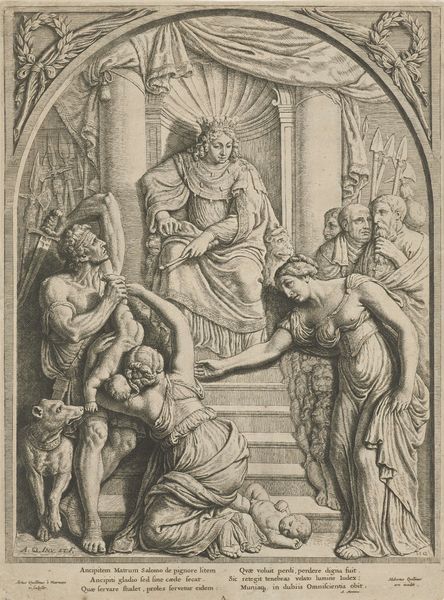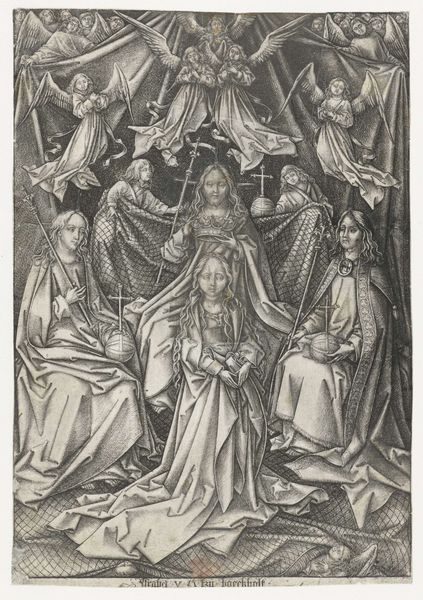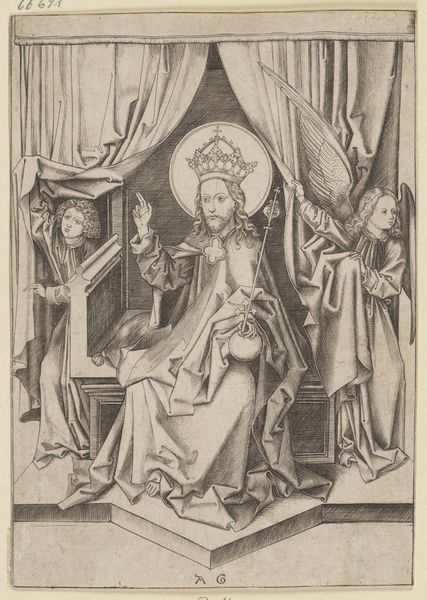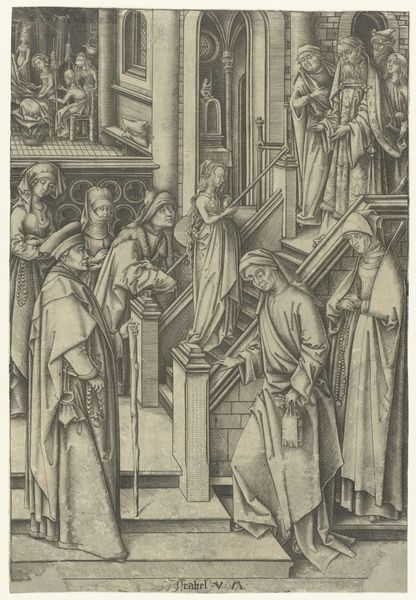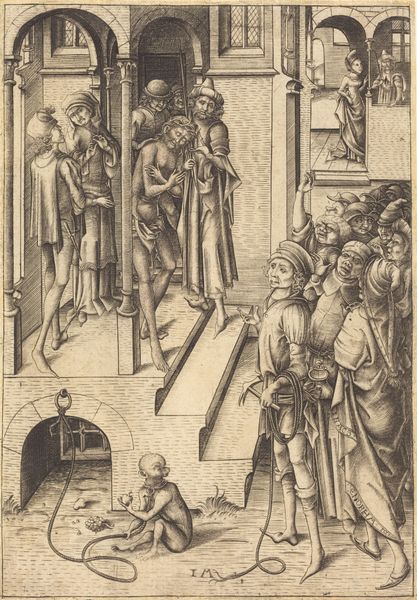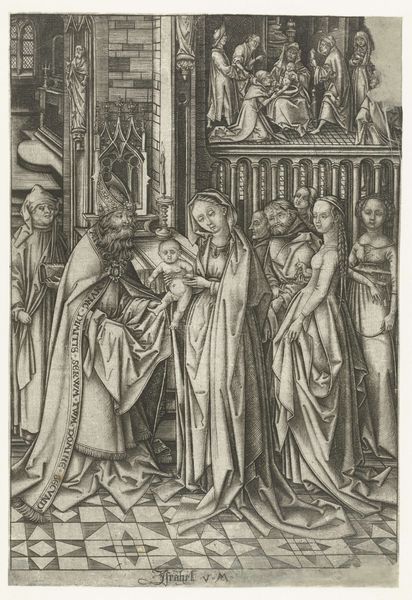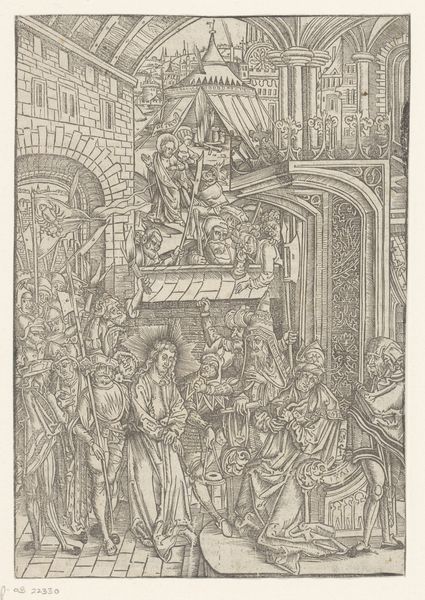
drawing, print, pen, engraving
#
portrait
#
drawing
#
allegory
#
narrative-art
#
pen drawing
# print
#
pen illustration
#
pen sketch
#
figuration
#
geometric
#
line
#
pen
#
history-painting
#
northern-renaissance
#
engraving
Dimensions: sheet (trimmed to plate mark): 25.6 x 21.3 cm (10 1/16 x 8 3/8 in.)
Copyright: National Gallery of Art: CC0 1.0
Curator: Here we have an engraving dating from around 1480, known as "The Judgment of Solomon," created by Master FVB. It depicts the biblical story where King Solomon wisely resolves a dispute between two women claiming to be the mother of the same child. Editor: My first impression is of its starkness. The entire scene, rendered in monochrome, emphasizes the dramatic tension. The architectural setting seems almost stage-like, amplifying the gravity of Solomon's judgment. Curator: Precisely. The medium of engraving itself—the laborious process of carving lines into a metal plate to produce multiple prints—speaks to the value placed on disseminating this moral lesson. Notice the contrast in textures: the smooth robes against the meticulously rendered hair and beards. This highlights the social hierarchy and emphasizes the figures' roles within the narrative. Editor: And it’s clearly meant for a wide audience. The print medium makes it accessible, doesn't it? The tale is compelling, certainly, but what makes it truly resonate, even now, is this clever use of visual language to reinforce a message of just rule, which would have been powerful, and perhaps even subversive, in its time. Consider, too, the position of Solomon elevated above the crowd, yet reliant on this moment to validate his kingship. Curator: Indeed, the distribution of prints allowed for a wider interpretation of this narrative, a way to take a critical approach to authority by owning, displaying, and openly responding to the image. You also note the emphasis on craftsmanship. Consider how the engraving technique—the very *making* of this image—served as a signifier of the artist’s skill. Each precise line testifies to the artistry of Master FVB. Editor: Right. Think about where this would have been displayed, too – not just in the homes of wealthy patrons but potentially in public spaces. "The Judgment of Solomon" would act as a constant reminder of the ideal of a wise and just ruler. Curator: Looking closely, I am struck by the varying widths of lines and hatching patterns – so effectively capturing volume, shadow, and textural details that contribute significantly to the engraving's overall aesthetic quality. It is the tangible labor that transforms the commonplace into something valued. Editor: I am struck, too, by the potential the imagery unlocks and wonder whether early viewers noticed, for instance, parallels with contemporary power struggles, and to what extent this reading informed interpretations of justice, authority, and leadership at the time. Curator: Exactly. By examining these images we reveal that even artwork from the 15th century prompts critical considerations about craft and social discourse. Editor: Yes, and how it served, in effect, as visual propaganda. This print showcases the timeless ability of art to participate directly in shaping our socio-political narratives and expectations.
Comments
No comments
Be the first to comment and join the conversation on the ultimate creative platform.
